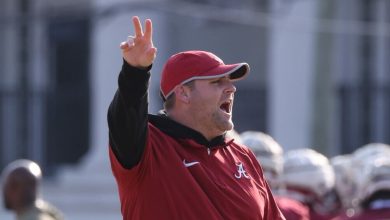The reason behind Jack Flaherty’s impasse in free agency

Jack Flaherty, once considered one of the top pitching prospects in Major League Baseball, has faced an unexpected and prolonged impasse during his free agency. After several promising seasons with the St. Louis Cardinals, where he demonstrated flashes of brilliance as one of the league’s most dynamic young pitchers, Flaherty found himself at a crossroads. As free agency extended into the offseason, a growing sense of uncertainty surrounded his value on the open market, leaving both the player and potential suitors questioning how this impasse came to be.
The reasons behind Jack Flaherty’s struggles in free agency are multifaceted. These reasons are tied to his injury history, fluctuating performance, market conditions, and broader shifts in the way teams value pitching. While his talent and past success make him a valuable asset on the surface, a closer look reveals the complex web of factors that have led to his current situation.
A Rising Star with Early Promise
Jack Flaherty was drafted by the St. Louis Cardinals in the first round of the 2014 MLB Draft, selected 34th overall out of Harvard-Westlake High School in California. From the moment he debuted with the Cardinals in 2017, Flaherty made a strong impression, showing poise, velocity, and an ability to handle big league hitters. His fastball reached into the high 90s, and his curveball, which became one of the most deadly in the league, had a devastating bite. By 2019, Flaherty had cemented himself as one of the league’s brightest young stars, finishing fourth in National League Cy Young voting with a dominant second half that saw him post an incredible 0.91 ERA from July onward.
Flaherty’s rapid ascent to ace status was thrilling for the Cardinals and their fanbase, and many believed that he had the potential to become one of the top pitchers in baseball for years to come. His combination of power and command on the mound gave him the ability to dominate any lineup, and for a brief period, it seemed like he was primed for a career full of accolades and postseason glory.
But as is often the case in the unforgiving world of Major League Baseball, the path to sustained success is rarely linear, and Flaherty’s career would soon be interrupted by a series of challenges, both on and off the field, that would complicate his standing in free agency.
The Injury Concerns
One of the most significant factors behind Flaherty’s current impasse in free agency is his injury history. Injuries have plagued Flaherty for several years, casting doubt on his long-term durability. While Flaherty’s 2019 season was nothing short of exceptional, the following year, 2020, was a disappointment in many respects. The pandemic-shortened season, which limited most players to just 60 games, saw Flaherty struggle with inconsistency. His ERA of 4.91 was a far cry from his 2019 performance, and he failed to resemble the ace that many had expected him to become.
2021, however, was the year that truly raised red flags. Flaherty was sidelined for much of the season due to a shoulder injury that required him to spend time on the injured list. Shoulder issues for pitchers are especially concerning, as they can often be linked to long-term mechanics problems or even require surgery. Flaherty managed to return to the mound later in the season, but his performance wasn’t the same. He posted an ERA of 3.22 in 17 starts that year, but the shoulder injury clearly compromised his ability to remain consistently healthy and effective over the long haul.
The injury bug continued to bite in 2022. Flaherty missed a significant portion of the season due to a strained shoulder, forcing him to pitch in only 14 games that year. His ERA ballooned to 4.25, and despite showing flashes of his old form, it was clear that he was no longer the dominant pitcher he had been in 2019. For teams looking to make long-term investments in starting pitchers, a history of injuries, particularly to a pitcher’s shoulder, raises red flags that often deter major offers.
In free agency, the injury question looms large. Teams need to evaluate whether Flaherty can stay healthy over the course of a full season. The uncertainty surrounding his health, particularly with recurring shoulder issues, makes him a risky investment for any team willing to spend big. The result is that teams may be hesitant to offer Flaherty the kind of multi-year, high-dollar contract that some of his contemporaries are receiving.
Inconsistent Performance
While injury concerns have certainly played a large role in Flaherty’s free agency struggles, inconsistency in his performance has also contributed to the impasse. As a pitcher with high upside, Flaherty has at times showcased the ability to dominate hitters with both his stuff and his command. However, he has also demonstrated stretches of uneven play, marked by a lack of control, diminished velocity, or difficulty navigating opposing lineups.
This inconsistency came to a head in 2022. Though Flaherty’s raw stuff remained strong, he struggled with the command and consistency that had defined his earlier years. He walked more batters than usual, had a higher-than-expected WHIP (walks and hits per inning pitched), and his strikeout rate saw a noticeable dip. These fluctuations left teams wondering which version of Flaherty they would get moving forward. Would they get the All-Star, Cy Young-caliber pitcher who dominated in 2019, or the version that battled inconsistency and injuries?
Moreover, the volatility in his performance affects teams’ willingness to invest in Flaherty as a top-of-the-rotation starter. With the increasing emphasis on high-performance analytics, teams are more reluctant to take risks on pitchers who cannot consistently deliver elite numbers. Flaherty’s ERA, WHIP, and strikeout rate in recent years have fallen just below the threshold that many teams expect from their frontline pitchers.
In a market flooded with talented pitchers—many of whom are both more consistent and healthier—Flaherty’s recent track record raises doubts about whether he can be relied upon for a full season of top-tier production.
Changing Market Conditions and Shift in Team Strategy
The broader trends in the MLB market have also played a role in Flaherty’s current free agency predicament. Over the past few seasons, baseball teams have increasingly prioritized pitchers who are reliable, durable, and able to provide consistent innings. Teams are also placing a growing emphasis on younger, less injury-prone pitchers who have more control years available, as opposed to older pitchers or those with injury histories.
With starting pitching becoming increasingly important for teams seeking postseason success, the free-agent market has seen a shift in recent years. Teams are allocating larger portions of their payroll toward younger pitchers or those who can produce at an elite level over the long term. The reluctance to spend on pitchers with injury histories, like Flaherty, has been magnified by the increasing emphasis on analytics, with teams leveraging data to identify pitchers who can deliver reliable production without the uncertainty.
As a result, even talented pitchers like Flaherty, who have shown potential in the past, are finding themselves in a difficult market. Teams that might have been more willing to invest in pitchers with upside just a few years ago are now more cautious, especially given the influx of younger, controllable pitchers that teams can develop within their own systems. The competition for starting pitchers has become more aggressive, and as a result, free agents like Flaherty face the pressure of proving they can be both durable and consistent in a highly competitive environment.
The Financial Impact of a Volatile Market
In addition to the performance and injury concerns, the economic factors surrounding MLB’s financial landscape have also contributed to Flaherty’s impasse. With several teams tightening their budgets, especially after the COVID-19 pandemic caused disruptions to team revenues, the willingness to commit significant financial resources to free-agent pitchers has been reduced. Teams that once would have pursued high-end pitchers like Flaherty in his prime years are now focused on other areas of need, such as rebuilding or investing in younger, cheaper talent.
This has created an even more competitive environment for players like Flaherty, who are trying to secure lucrative contracts. The ongoing financial uncertainties in the league, exacerbated by the pandemic and changes in team payrolls, have led to a situation where some players, even with considerable talent, face prolonged waiting periods as teams take a more conservative approach to their spending.









